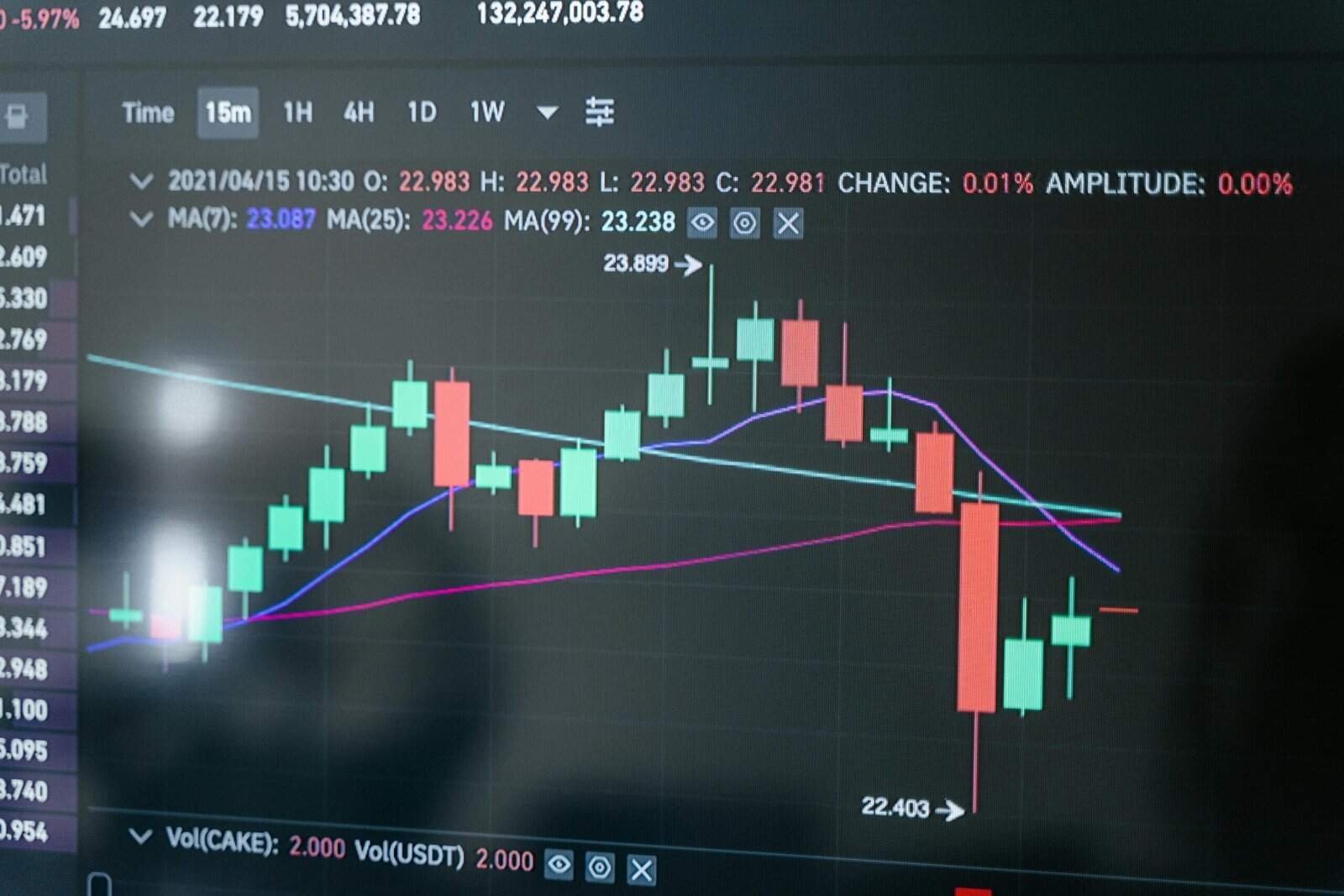?Are you wondering how governments around the world are responding to crypto adoption in 2025 and what that means for you?

How Are Governments Responding To Crypto Adoption In 2025?
This article gives you a clear, friendly, and practical look at how government actions in 2025 shape the crypto environment. You’ll see regulatory trends, what different countries are doing, how central bank digital currencies (CBDCs) fit in, and what this means for your business, investments, and everyday use of crypto.
Global overview: the state of crypto regulation in 2025
Regulation in 2025 is more mature and more varied than in prior years. Governments are balancing innovation, consumer protection, financial stability, and geopolitical concerns. You’ll find that responses range from strict enforcement to supportive regulation and active development of public digital currencies.
This section summarizes the major themes shaping policy: regulatory clarity, enforcement intensity, CBDC experimentation, taxation changes, and cross-border cooperation. Each theme affects you differently depending on where you live and how you use crypto.
Regulatory approaches: a spectrum of responses
Governments generally fall into several regulatory approaches. Some adopt permissive frameworks to attract crypto business and talent, others prioritize control and strict oversight, and many follow a hybrid model. You’ll want to understand which approach applies to your jurisdiction to manage compliance and opportunities.
- Permissive and innovation-friendly: regulators encourage startups, sandbox programs, and licensing regimes that are welcoming to crypto firms.
- Conservative and restrictive: some regulators emphasize strict licensing, bans on certain services (like retail stablecoins), or heavy reporting requirements.
- Hybrid: many countries provide clear rules for certain activities (exchanges, custody, securities) while restricting others.
How regulation varies by activity
Regulations differ across activities: spot trading, derivatives, custody, stablecoins, decentralized finance (DeFi), and tokenized securities. You should identify which rules apply to your use case, because one country might treat a token as property while another treats it as a security.
For example, custody and exchange services are often heavily regulated to protect users, while DeFi protocols usually operate in legal gray areas. Stablecoins attract particular scrutiny because of their potential to affect monetary stability.
Country snapshots: what major jurisdictions are doing
You’ll find that country-level responses reflect political priorities, market size, and existing legal frameworks. The table below gives a quick classification of representative countries in 2025 and their general stance toward crypto.
| Country/Region | General stance (2025) | Key focus areas |
|---|---|---|
| United States | Active regulation and enforcement | Securities law application, stablecoin regulation, taxation, enforcement against fraud |
| European Union | Harmonized-but-comprehensive | MiCA implementation, AML rules, consumer protections, token classification |
| United Kingdom | Pro-innovation with strong safeguards | FCA licensing, stablecoin oversight, crypto promotions regulation |
| China | Restrictive for private crypto, proactive public digital currency | Private crypto largely banned, robust CBDC implementation |
| Japan | Balanced, license-driven | Strong exchange regulation, consumer protections, clear tax guidance |
| Singapore | Pro-business and clarity-focused | Licensing (PS Act), fintech sandboxes, hub for tokenized assets |
| India | Mixed approach, tighter controls | Taxation on transfers, regulations targeting illicit use, digital payment initiatives |
| El Salvador & Central American hubs | Supportive / national adoption | National-level Bitcoin adoption experiments and tourism-driven policies |
| Gulf States (e.g., UAE) | Competitive, regulated hubs | Free-zone licensing, regulatory clarity to attract exchanges and custodians |
This snapshot helps you see where to expect clarity and where to expect uncertainty. If you’re operating cross-border, you’ll need to follow several regimes simultaneously.
The rise of CBDCs and public digital money
Central bank digital currencies are now a key part of government responses. In 2025, many central banks have launched pilot programs, with a smaller but growing number offering publicly accessible CBDCs. You’ll want to understand how a CBDC intersects with privately issued tokens and how it may affect payments, privacy, and monetary policy.
Why governments pursue CBDCs
Governments pursue CBDCs to improve payment efficiency, increase financial inclusion, enhance monetary policy transmission, and offer a sovereign digital alternative to private stablecoins. For you, a CBDC could mean faster payments, lower fees for cross-border transactions, and changes in how privacy and identity are handled in payments.
CBDC models and what they mean for you
There are several CBDC models in use or under consideration:
- Retail CBDC (direct to the public) — you can hold a digital wallet issued or backed by the central bank.
- Wholesale CBDC (for banks and financial institutions) — used for interbank settlement, which may speed up large-value transfers.
- Hybrid / two-tier models — central banks issue CBDC while private intermediaries provide wallets and on-ramps.
The model chosen affects privacy, intermediaries’ roles, and the user experience.
| CBDC Model | Who uses it | Implications for you |
|---|---|---|
| Retail CBDC (central) | General public | More direct government oversight, potential for real-time payments and programmable money |
| Retail CBDC (two-tier) | Public via intermediaries | Banks/wallet providers manage user interfaces; central bank provides settlement layer |
| Wholesale CBDC | Financial institutions | Improved back-end efficiency, indirect benefits to consumers through faster settlements |
AML, KYC, and financial crime enforcement
Anti-money laundering (AML) and know-your-customer (KYC) enforcement intensified in 2025. Governments are aiming to bring crypto firms into the same anti-crime framework as traditional financial institutions. You’ll need to expect more robust identity checks, suspicious activity reporting, and data-sharing requirements.
How AML/KYC rules affect your crypto use
You may be required to verify your identity even for relatively small transactions, depending on local rules. Platforms often implement tiered KYC: limited features for unverified wallets, full access only after identity verification. If you use DeFi, you should be aware that on-ramps and off-ramps (centralized exchanges and fiat gateways) will enforce strong KYC, which can hinder anonymity.
Cross-border AML cooperation
Authorities coordinate more across borders. Shared standards and data exchange mechanisms mean that illicit activity is harder to hide internationally. If you interact with crypto across jurisdictions, your transactions may be subject to reporting in multiple countries.

Taxation: crypto taxes in 2025
Tax authorities have become more sophisticated in tracking and taxing crypto transactions. Most countries treat crypto for tax purposes as property, capital assets, or income, and have clarified reporting requirements. You’ll need to maintain records, report gains, and potentially pay VAT or transaction taxes depending on local law.
Practical tax considerations
- Keep detailed transaction records: purchase price, sale price, dates, and purpose for each transaction.
- Understand taxable events: selling crypto for fiat, trading one token for another, receiving income in crypto, and spending crypto on goods/services can all create tax obligations.
- Use tax software or professional help if you’re active: regulators have access to exchange data and blockchain analytics.
Global tax trends table
| Tax Topic | Common practice (2025) | What you should do |
|---|---|---|
| Capital gains | Crypto treated as property or asset | Track cost basis and holding periods for gains/losses |
| Income tax | Crypto wages or staking rewards taxed as income | Report fair market value at receipt, with payroll implications |
| VAT / Sales tax | Retail crypto sales often VAT-exempt; tokenized services may be taxed | Confirm local VAT rules or merchant obligations |
| Withholding & reporting | Exchanges provide tax statements; some jurisdictions require withholding | Keep records and use provided forms in filings |
Stablecoins and private money regulation
Stablecoins remain a major focus because they bridge crypto and traditional finance. Regulators are concerned about systemic risk, reserve backing, and misuse for illicit transfers. In 2025, several jurisdictions require stablecoin issuers to adhere to reserve and redemption standards, transparency audits, and licensing.
What this means for your stablecoin use
When you hold or use stablecoins, you benefit from clearer guarantees on reserves and redemption. However, you may face limits on which stablecoins are allowed for payments or financial market use. You should prefer regulated stablecoins in jurisdictions with robust rules.
Decentralized finance (DeFi) and smart contract regulation
DeFi remains a legally challenging area. Governments are trying to apply existing laws to novel structures: who is the “issuer”, who is the “custodian”, and how to assign liability? Regulators in 2025 are beginning to specify rules for protocol developers, on-chain governance, and DeFi services offered via centralized interfaces.
How DeFi regulation may affect you
If you use DeFi platforms, you’ll see more centralized access points complying with KYC/AML. Protocols offering services through front-end websites may find those interfaces regulated similarly to exchanges. You should consider counterparty risk, smart contract risk, and increased regulatory scrutiny.

Securities law and token classification
Classifying tokens as securities or non-securities remains a central legal question. Many jurisdictions updated tests or guidance to determine when a token constitutes an investment contract. You’ll need to assess whether tokens you trade are treated as securities, which affects registration, disclosure, and investor protections.
Practical steps for token assessment
- Look for published regulatory guidance in your jurisdiction.
- Consider whether a token represents an expectation of profit from others’ efforts.
- When in doubt, treat tokens with potential securities characteristics more cautiously.
Licensing and supervision of service providers
Licensing frameworks for exchanges, custodians, and wallet providers are now common. A regulated license typically requires capital requirements, KYC/AML compliance, cybersecurity controls, and regular audits. If you run a crypto business or use professional custodians, prefer regulated providers to reduce operational risk.
How to choose a provider
- Verify the provider’s license and regulatory status.
- Review proof-of-reserves, security audits, and insurance coverage.
- Check user protection measures, dispute resolution procedures, and complaint record.
Consumer protection and disclosure
Consumer protection is a priority in 2025. Regulators require clearer risk disclosures, limits on marketing claims, and restrictions on promotions that target vulnerable groups. If you’re investing or using crypto products, expect more straightforward explanations of risks, fees, and potential losses.
Advertising and promotions
Many regulators restrict aggressive marketing of high-risk crypto products. Platforms must show risk statements and avoid misleading return promises. For you, this means more transparency and possibly fewer spammy offers.

Cross-border issues and international coordination
Crypto naturally crosses borders, and regulators are coordinating more on standards. Organizations like the Financial Action Task Force (FATF), the International Monetary Fund (IMF), G20, and the Bank for International Settlements (BIS) influence domestic rules. You’ll find that cross-border payments, taxation, and enforcement benefit from shared frameworks.
How international coordination affects you
- Faster adoption of common KYC/AML standards.
- Cross-border freezing and asset recovery becomes more feasible.
- Differences remain, so you must comply with both local and counterparty jurisdiction rules.
Law enforcement, sanctions, and illicit activity
Law enforcement agencies have improved blockchain analytics and cross-border cooperation, making it harder to use crypto for illicit activities. Sanctions enforcement now explicitly covers certain crypto-based transactions, and authorities pursue mixers, token tumblers, and privacy-enhancing tools when used for unlawful purposes.
What you should avoid
Avoid participation in schemes involving sanctions evasion, illicit marketplaces, or unlicensed money transmission. Even if you thought blockchain anonymity was sufficient, 2025’s tools make tracing more effective. Use reputable providers and document your transactions.
Innovation policy: balancing growth and control
Many governments aim to capture economic benefits of crypto while controlling risks. You’ll see policies that fund research, provide sandbox environments, and partner with private industry. That said, support often comes with strings: compliance obligations, data localization requirements, or restrictions on certain business models.
How to participate in innovation safely
- Use regulatory sandboxes or compliant pilots if you’re building new products.
- Engage with industry associations to shape policy.
- Build compliance and security into product design from day one.

Impact on traditional financial systems
Banks and payment networks increasingly integrate crypto services. Some banks offer custody, trading, and tokenized asset services under regulatory oversight. Financial stability debates continue, especially around large stablecoin issuers, tokenized deposits, and leverage in crypto markets.
How traditional finance integration affects you
- You may see better fiat on/off ramps and improved liquidity.
- Institutional custody may offer insurance and reduced operational risk.
- Integration may bring stricter requirements like identity verification and reporting.
Consumer use cases: payments, savings, remittances, and more
Practical uses for crypto in 2025 are expanding: cross-border remittances, programmable merchant payments, tokenized loyalty points, and decentralized identity systems. Governments sometimes support pilots for payments, especially where CBDCs are not yet implemented.
Remittances and cross-border payments
Crypto and stablecoins can lower remittance costs and speed transfers. Regulators in some corridors have established frameworks to ensure transparency and consumer protection, reducing friction for legitimate remittance users like you.
Savings and yield products
DeFi yield and staking offer returns but carry smart contract and counterparty risk. You should balance potential returns with regulatory protections and understand that high yields often come with high risk.
For businesses: compliance and competitive strategy
If you run a business, the regulatory environment shapes how you accept crypto, tokenize assets, or integrate blockchain. You’ll need compliance programs, tax reporting capability, and a solid risk management approach. Regulatory clarity can be an advantage for businesses that build compliance-first models.
Key actions for businesses
- Implement robust KYC/AML and transaction monitoring.
- Consult legal counsel for token classification and licensing.
- Use audited custodians and insurers for asset protection.
For developers and protocol teams
Developers face increasing scrutiny. Building protocols that allow illicit use, or that deliberately evade regulation, invites enforcement. You should design with regulatory compliance in mind—privacy by design balanced with mechanisms for lawful oversight where required.
Governance and developer responsibility
On-chain governance may not shield developers from legal risks in all jurisdictions. Consider transparent governance, clear code audits, and mechanisms to address vulnerabilities responsibly.
Market infrastructure: exchanges, custody, and tokenized assets
Infrastructure matured in 2025 with regulated exchanges, institutional custodians, and tokenization platforms for assets like real estate, equities, and bonds. These developments increase liquidity and open avenues for new investment products, but they also bring traditional regulatory regimes into crypto markets.
What to look for in infrastructure services
- Regulatory registration and compliance track record.
- Clear segregation of client assets.
- Transparent proof-of-reserves and security audits.
Privacy and identity: the trade-offs
Privacy remains a key concern. Some jurisdictions prioritize privacy-enhancing technologies, while others emphasize identity and traceability. You’ll need to navigate trade-offs between privacy and regulatory compliance depending on where you transact.
Digital identity integration
Countries adopting digital ID frameworks often link them to crypto onboarding, enabling smoother KYC. While this simplifies compliance, it raises privacy questions that you should weigh.
Litigation and legal precedents
By 2025, courts in several jurisdictions issued landmark rulings defining token ownership, custody arrangements, and liabilities. These precedents guide regulators and firms. If you’re involved in disputes or running a platform, legal outcomes in major markets are important reference points.
How legal developments affect you
- Court decisions influence how tokens are treated (property vs. security).
- Dispute resolution clauses and choice-of-law provisions matter for cross-border contracts.
- You should monitor key cases to inform compliance and risk management.
Geopolitics: crypto as strategic leverage
Crypto policy is intertwined with geopolitics. Some nations use crypto-friendly policies to attract financial activity, while others control crypto access to maintain monetary sovereignty or enforce sanctions. You should be aware that geopolitical shifts can rapidly change rules that affect cross-border flows.
Sanctions and national security
Regulators increasingly target crypto channels used to circumvent sanctions. If you transact internationally, ensure compliance with export and sanctions controls to avoid severe penalties.
Practical checklist: what you should do in 2025
This quick checklist helps you act prudently in the current regulatory environment.
- Know your jurisdiction’s rules: licensing, KYC, taxation.
- Use regulated exchanges and custodians for significant holdings.
- Keep detailed records for tax and compliance.
- Avoid services that facilitate illicit activity or sanctions evasion.
- Consider legal advice for token issuance or launching services.
- Prioritize security: audits, multi-sig, and insurance where possible.
- Stay updated: policy changes can happen quickly.
Future outlook: what may change next
Expect continued regulatory refinement, more CBDC rollouts, and increasing institutional participation. Countries will iterate on rules as new technologies and business models emerge. For you, this means staying adaptable and informed so you can take advantage of opportunities while managing regulatory risk.
Emerging trends to watch
- More harmonization of international standards.
- Greater clarity on DeFi and on-chain governance liabilities.
- Growth of tokenized real-world assets under regulated frameworks.
- Increasing use of AI and analytics in enforcement and compliance.
Conclusion
You’re operating in a world where crypto regulation in 2025 is no longer ad hoc or purely permissive. Governments are actively shaping markets: through clearer licensing, stronger AML/KYC enforcement, targeted taxation, and CBDC development. That environment creates both risk and opportunity. By understanding the regulatory landscape, choosing reputable providers, maintaining good records, and building compliance into your activities, you can navigate this evolving space more confidently.
If you need guidance tailored to your country or use case—tax implications, compliance steps for a startup, or choosing a custody provider—consider seeking professional legal and tax advice. Regulation will continue to evolve, and you’ll benefit from staying informed and proactive.
